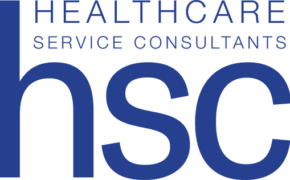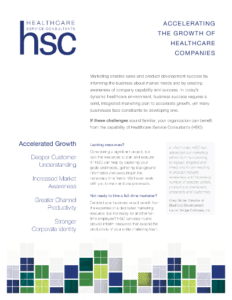Table of Contents
This is part 3 of our series, Content Marketing in Healthcare IT. In this article, we’ll be discussing the role of blogs in healthcare IT marketing. Here are links for part 1 (intro) and part 2 (white papers).
Engaging with healthcare IT stakeholders can be challenging. Each has unique needs, priorities, and interests. With busy clinicians, in particular, competing for time and attention within the constraints of already-tight schedules and long days is difficult.
Blogs are an excellent way to produce highly-targeted, short content that can be digested easily by busy readers. In healthcare IT, blogs are vehicles to discuss clinical, operational, and financial topics of interest across the healthcare continuum. Because blogs support an ongoing dialog, they facilitate regular engagement with your target audience. This helps your brand and its solutions to remain top-of-mind among potential customers.
1. What Is a Blog?
Blogs (like this one!) are short-form content marketing pieces, ranging between 500 and 700 words in length. They are ideal for exploring very narrow topics. Blogs should be educational in nature.
Topics should provide an opportunity to discuss specific healthcare-related challenges, workflows, and use cases with each unique persona in your target audience. You can discuss potential solutions or value propositions at a theoretical level. But, blogs should not be promotional in nature. Aim to avoid overt marketing claims.
By design, blogs are ideally released on a regular basis (weekly, biweekly, monthly). This allows for a continuous flow of thought leadership that gets in front of your main prospects and helps your brand to remain top of mind. Even though blogs are often created as a series, they do not need to form a collective narrative or refer to one another. Rather, each blog can stand on its own as an independent piece. This presents the opportunity to produce fresh, targeted, and succinct content.
2. Blogs vs. White Papers
Like the white paper, blogs are a top-of-funnel form of marketing content. They should attract and engage potential customers early in their buying journey during the “information gathering” phase. However, where a white paper’s length allows it to explore complex concepts at a deeper level, blogs need to be quick and easy to read. They should be more focused on specific topics for distinct healthcare personas.
White papers typically discuss problems, their impact, and the value of solving them from many different angles. That’s great news for blog generation. You can often repurpose a white paper’s content into many smaller blogs. This not only increases the value of your marketing efforts, it also provides extra benefits, including:
- Increasing promotional opportunities. While a white paper releases at a single time, a blog can break that content into separately promotable pieces. You can then distribute these pieces on social media, your website, or using RSS feeds.
- Improved targeting. Blogs can extract and reorganize white paper content to create pieces that are hyper-focused on specific problems and personas. This makes it much easier to attract the attention of distinct clinical, technical, and financial healthcare IT stakeholders.
- Extending the conversation. Blogs should include handy links to relevant (source) white papers or other forms of marketing content. So, once you pique a reader’s interest, they can quickly and easily go to more detailed information.
3. Blogs and SEO
Blogs provide a platform for regular engagement with target audiences. But, they also offer several search engine optimization (SEO) advantages that can help drive traffic to your website. For example:
- Blogs should have their own dedicated pages to make them “crawlable” by search engines.
- By releasing new entries on a regular basis, blogs refresh your website with new and consistent content. This is an important ranking criterion for SEO.
- Internal links to other website pages or long-form content on your website, from within individual blog entries, is helpful because SEO engines index them and create internal website links. The more links a page has to it, the higher it will rank within search engine results.
That said, the ultimate goal of the blog is to produce credible, educational thought leadership that drives prospects to your website and moves them towards being ready to purchase. While blogs should integrate relevant keywords and internal links; their prolific or misplaced use can deter readers and distract from this objective.
Remember, SEO is less important than the content itself. The primary goal isn’t attracting customers by organic searches. Rather, it is to support a content-driven inbound marketing strategy.
4. Integrating Blogs into Your Content Marketing Strategy
Because they are highly targeted and quick to read, blogs are an excellent way to engage with time-constrained healthcare IT stakeholders. Blogs provide targeted, educational content that demonstrates your organization’s expertise and builds credibility in your solutions. They also play an important role in lead generation by:
- directing traffic to your website
- fueling SEO rankings
- supporting lead nurturing strategies
Our team of healthcare IT product marketing experts have decades of experience in blog design and content development. We are ready (and standing by!) to help you integrate blogs into your content marketing strategy. Contact us to learn more.
Photo by Janko Ferli on Unsplash




